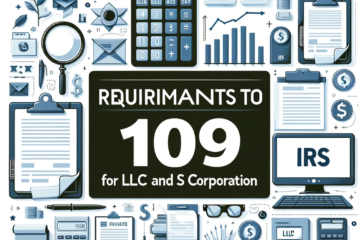Limited liability protects business owners from being personally liable for their company’s debts and liabilities, meaning they’re only on the hook for what they’ve invested. This applies to corporations, LLCs, and other business structures.
However, there are cases where the shield of limited liability can be pierced, such as in cases of illegal or fraudulent actions.
Introduction to Limited Liability
Limited liability is a legal status in which a person’s financial liability is limited to a fixed sum, most commonly the value of a person’s investment in a corporation, company, or partnership.
This means that if a company that provides limited liability to its investors is sued, then the claimants are generally entitled to collect only against the assets of the company, and not the assets of its shareholders or other investors.
This is in contrast to the liability of sole proprietors and partners in general partnerships, who are each liable for all the debts of the business (unlimited liability).
How Limited Liability Works
Limited liability is a legal status that provides protection to the owners of a business from being held personally liable for the debts and liabilities of the company.
This means that the owners of the business, also known as shareholders or members, can only be held liable for the amount of money they have invested in the company and not for any additional amount beyond that.
For example, if a company with limited liability is sued, the claimants can only collect against the assets of the company and not the personal assets of the shareholders or members. This is in contrast to a general partnership, where each partner is personally liable for all the debts of the business.
Limited liability is typically associated with corporations and limited liability companies (LLCs), but it can also apply to other types of business structures such as limited partnerships and limited liability partnerships.
However, it’s worth noting that limited liability is not absolute and there are certain exceptions and circumstances where shareholders or members may be held personally liable.
For example, if a director or officer of a corporation is found to have acted in an illegal or fraudulent manner, they may be held personally liable for their actions. Additionally, if a shareholder or member is also an employee of the corporation, they may be held personally liable for torts committed within the scope of employment.
Classifications of Limited Liability
The Internal Revenue Service (IRS) classifies businesses according to their ownership structure and level of personal liability for the business’s debts. The most common classifications for limited liability are:
- Limited Liability Company (LLC): An LLC is a type of business structure that combines aspects of both a corporation and a partnership. Owners of an LLC, called members, have limited personal liability for the company’s debts.
- S-Corporation: An S-corporation is a type of corporation that has elected to be taxed under Subchapter S of the Internal Revenue Code. Shareholders of an S-corporation have limited personal liability for the company’s debts.
- C-Corporation: A C-corporation is the most common form of corporation. Shareholders of a C-corporation have limited personal liability for the company’s debts.
It’s important to note that the IRS classifications are based on the tax treatment of the entity and don’t affect the limited liability status of the business, which is determined by the state laws where the business is incorporated.
When it comes to taxes, the IRS loves to play mix and match with business structures. And, the Limited Liability Company (LLC) is no exception. Depending on the choices made by the LLC and the number of members it has, the IRS will classify it as a corporation, partnership, or even as an extension of the LLC’s owner’s tax return – a “disregarded entity”.
Let’s break it down: if an LLC is domestic and has at least two members, the IRS will consider it as a partnership when it comes to federal income tax unless it files Form 8832 and decides to be treated as a corporation. But, if an LLC has only one member, the IRS will consider it as a “disregarded entity” separate from its owner’s tax return, unless it files Form 8832 and chooses to be treated as a corporation. However, it’s worth noting that for employment tax and certain excise taxes, an LLC with only one member will still be considered a separate entity.
Reference: www.irs.gov
Shareholder Liability in Corporations and Limited Liability Companies
- In a corporation or limited liability company (LLC), a shareholder is not personally liable for any of the debts of the company, other than for the amount already invested in the company and for any unpaid amount on the shares in the company, if any.
This means that if the company is sued, the shareholders will not be held personally liable for the debts of the company, and the claimants can only collect against the assets of the company. However, this rule is subject to certain exceptions.
For example, the directors of small companies (who are frequently also shareholders) may be required to give personal guarantees of the company’s debts to those lending to the company.
In this case, they will be liable for those debts that the company cannot pay, although the other shareholders will not be so liable.
Additionally, a shareholder who is also an employee of the corporation may be personally liable for actions the employee takes in that capacity on behalf of the corporation, particularly in cases of torts committed within the scope of employment.
Liability of Directors and Employees
- Liability of directors and employees refers to the legal responsibility of the directors and employees of a corporation or limited liability company (LLC) for the debts and actions of the company.
In the case of directors, they may be held personally liable for the company’s debts in certain situations, such as if they have given personal guarantees of the company’s debts to those lending to the company.
Additionally, directors may be held liable for wrongful actions they have taken in their capacity as directors, such as if they have breached their fiduciary duty to the company or its shareholders.
In the case of employees, they may be held personally liable for actions they take in their capacity as employees of the corporation, particularly in cases of torts committed within the scope of employment.
Additionally, if an employee has been given the authority to act on behalf of the company, such as signing contracts, they may be held liable for any actions they take within that scope of authority.
It’s important to note that the liability of employees and directors is secondary to the company’s liability, and the company’s assets will be used first to meet the claims, only if the company’s assets are insufficient, the employees and directors may be held liable.
Is There Anything Like Unlimited Liability
Unlimited liability is a legal status in which the owners of a business, such as partners in a partnership or sole proprietors, are held personally liable for all the debts and liabilities of the business. This means that if the business is sued or incurs debts that it cannot pay, the creditors can collect not only from the assets of the business but also from the personal assets of the owners.
For example, if a general partnership incurs a debt that it cannot pay, the creditors can collect from the personal assets of all the partners and not just from the assets of the partnership.
Unlimited liability is typically associated with sole proprietorships and general partnerships, but it can also apply to other types of business structures such as a sole trader or a self-employed individual.
It is the opposite of limited liability where the owners of the business are protected from personal liability for the debts and liabilities of the company and can only be held liable for the amount of money they have invested in the company.
Piercing the Corporate Veil
- Piercing the corporate veil refers to a legal principle where the court disregards the separate legal identity of a corporation or LLC, making the shareholders or members personally liable for the debts and liabilities of the company.
It is typically invoked in cases where shareholders or members have not treated the corporation or LLC as a separate legal entity, or in cases of fraud, illegal activities, or undercapitalization of the company.
It’s a rare occurrence but when it happens, it allows creditors to collect debt or plaintiffs to hold shareholders or members liable for the wrongful actions of the company. It varies from state to state.
Liability of Parent Entities and Sole Owners
- Liability of parent entities and sole owners refers to the legal responsibility of the parent company or the sole owner of a subsidiary company for the debts and actions of the subsidiary.
They are generally not liable but under certain circumstances, such as “piercing the corporate veil,” they may be held liable for their subsidiaries’ obligations. This can happen when the parent entity or the sole owner does not maintain separate legal identities from the subsidiary, if the subsidiary is undercapitalized from its inception or if injustice/fraud to the creditor is proven.
Part-Paid Shares and Shareholder Liability
- Part-paid shares refer to a situation where a shareholder has only partially paid for the shares they have purchased in a company.
In such a case, the shareholder is still liable to pay the balance of the face or par value of the shares to the company, if a claim is made against the capital of the company.
This personal liability is separate from the liability of shareholders for the company’s debts, which is generally limited to the amount of money they have invested in the company.
Button Line
Limited liability protects business owners from being personally liable for their company’s debts and liabilities, meaning they’re only on the hook for what they’ve invested. This applies to corporations, LLCs, and other business structures.
However, there are cases where the shield of limited liability can be pierced, such as in cases of illegal or fraudulent actions. Piercing the Corporate Veil is another exception, where the court holds shareholders or members personally liable for the company’s debts and liabilities.

Aisha Noreen is an owner of a small business with more than 9 years of experience in the marketing industry. With the wisdom of an old soul, she always seeks innovation and mind-blowing ROI techniques. Her unique approach helped many small businesses thrive and she can surprise you in many ways as well. Believe it or not, her energy, passion, and creativity are contagious enough to transform your business and take it to another level.



